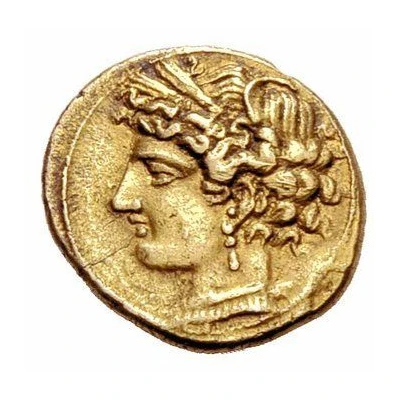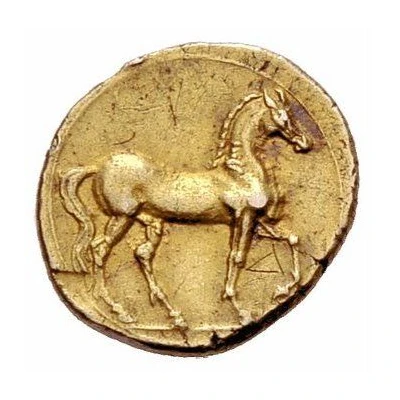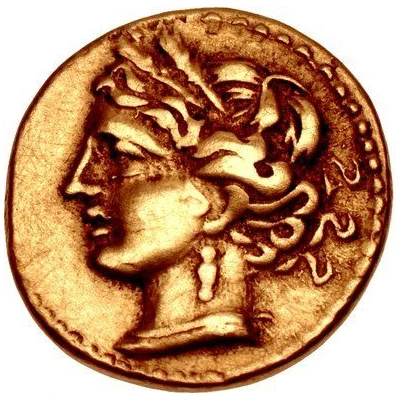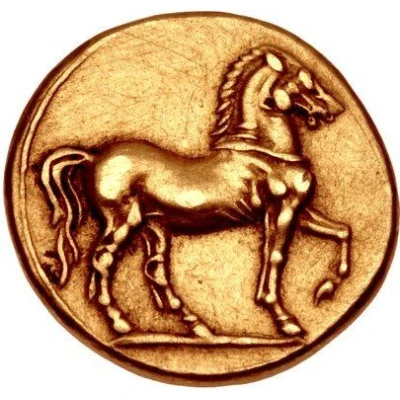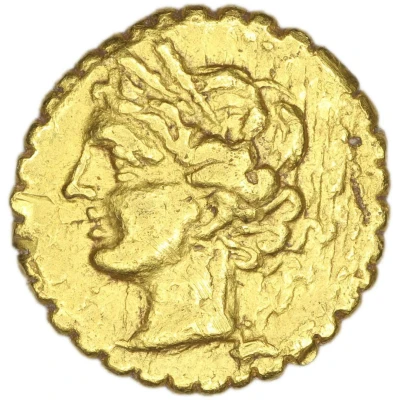
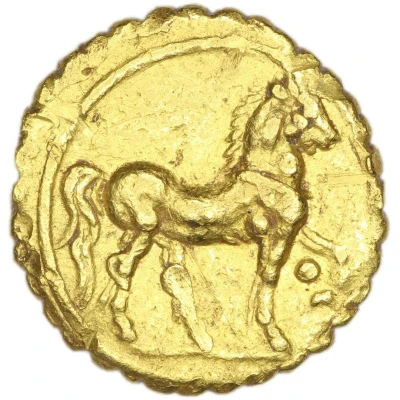

© Trustees of the British Museum
⅖ Stater 200 BC - 146 BC
| Gold | 3.02 g | - |
| Issuer | Carthage (Zeugitana) |
|---|---|
| Type | Standard circulation coin |
| Years | 200 BC - 146 BC |
| Value | ⅖ Gold Stater (4.8) |
| Currency | Shekel |
| Composition | Gold |
| Weight | 3.02 g |
| Shape | Scalloped |
| Technique | Hammered |
| Demonetized | Yes |
| Updated | 2024-10-09 |
| Numista | N#325805 |
|---|---|
| Rarity index | 100% |
Reverse
Horse standing right, pellet beneath horse's raised left foreleg.
Interesting fact
The ⅖ Stater coin from Carthage (Zeugitana) was used as a form of currency during the Hellenistic period, and its design was influenced by the Greek coinage of the time. The obverse of the coin features the head of the goddess Tanit, who was worshipped in Carthage, while the reverse depicts a horse and a palm tree, which were symbols of the city's wealth and prosperity. The coin's gold content and intricate design made it a valuable and prestigious form of currency in the ancient world.
